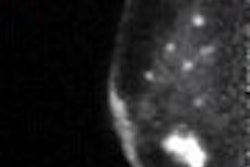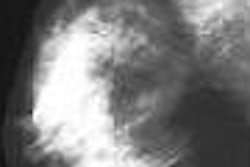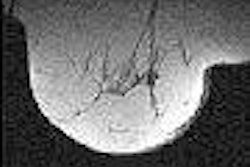What do women want? When it comes to breast cancer screening, they want to be well-informed about the procedure and understand how to handle a callback for additional imaging. And despite the hullabaloo about discomfort during mammography, information about pain is not high on their list of demands, according to a report in the Archives of Internal Medicine.
Dr. Larissa Nekhlyudov and colleagues from the department of ambulatory care and prevention at Harvard Medical School in Boston conducted a survey of women to determine what information they sought before initiating screening. They also queried women as to their preferences for involvement in the decision-making process.
"For women younger than 50, informed decision-making regarding screening mammography is considered especially important because the risk for breast cancer is low, the benefits of screening appear to be slow, and the adverse effects are potentially significant," Nekhlyudov's group wrote (Archives of Internal Medicine, June 27, 2005, Vol. 165:12, pp. 1370-1374).
For this 16-month long project, 203 women members (age 40-44) of the Harvard Pilgrim Health Care network were surveyed. The response rate was 47%. They were asked to rank the importance of information prior to screening (chance of developing breast cancer; pain during mammogram) on a five-point Likert scale. A similar five-point scale was employed to identify the women's preferred level of involvement in a screening program.
According to the results, the mean age of the respondents was 41 years. Most were white and had some college education. The majority of the mammograms were ordered by primary care providers, whom the respondents chose as their main source of information regarding screening (91%).
Eighty-nine percent of those surveyed said they were interested in the logistics of the mammogram, particularly what steps to take following an abnormal test result (89%). Seventy-five percent wanted to know how they would be contacted by the screening facility, and 71% wanted to know how quickly they would hear back. Information about pain and cost were least desired, according to the authors.
"Our findings suggest that women have information needs about screening that include the logistics of follow-up, the chances of having false-positive or false-negative results, and their risk of breast cancer," the group wrote.
While guidelines are in place that have primary care physicians taking responsibility for discussing these issues with their patients, a lack of time or training may leave them ill-equipped to actually do so, the authors stated. On the other hand, whether logistical information should be covered by the mammographer during the exam is also uncertain, they added.
Nekhlyudov's group acknowledged certain limitations to their study, such as the low response rate and the fact that they did not follow-up with the nonresponders. However, the survey results do indicate that women are actively seeking more information about mammography. To that end, healthcare providers need to decide who should supply that information and in what medium.
The authors pointed out that online decision tools are one option. In addition to answering frequently asked questions about mammography, these decision aids should also address the topics of breast ultrasound, MRI, and genetic markers, they advised.
By Shalmali Pal
AuntMinnie.com staff writer
June 27, 2005
Related Reading
Women at risk of breast cancer decline tamoxifen, July 17, 2005
Most women overestimate their breast cancer risk, June 14, 2005
Immediate mammo read offers little more than instant gratification, April 20, 2005
Studies decipher mammo trends, explore ways to alleviate patient distress, February 2, 2005
When push comes to shove: Addressing compression in mammography, October 5, 2004
Copyright © 2005 AuntMinnie.com



















